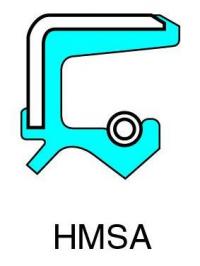Spring seals are the perfect solution when regular seals are unable to produce a leak-proof mating surface. They are the best substitute for sealing applications involving machinery as they are capable of resisting more heat and pressure than other types of seals.
The edge of the metal is finely ground after seal manufacture in a centerless grinder to enable an interference fit in the oil seal housing. A slight chamfer on the outer diameter (OD) of the seal is desirable for easy assembly. The sealing lip is prepared by buffing, grinding or cutting away the rubber flash which occurs at the sealing edge. A fine sealing edge creates sufficient pressure on the shaft to minimise spring load, leading to lower friction whilst maintaining effective seal performance. The garter spring plays an important role in the efficiency of the oil seal. If its tension is too high, heat will be generated between the sealing lip and the shaft, and result in rapid wear of the lip. If too low, the spring will be ineffective and the sealing lip will be worn away leading to leakage of the fluid.
The major cause of extrusion and nibbling is stress caused by high pressure. This is commonly noticed when the oil seal has a chipped or nibbled look. In fact, in some cases, the surface of the seal tends to peel on its own, which makes it have a shaved look. What the stress does is that it increases the clearance gap between the mating edges, which causes the seal to get entrapped, and then leads to severe physical damage.

